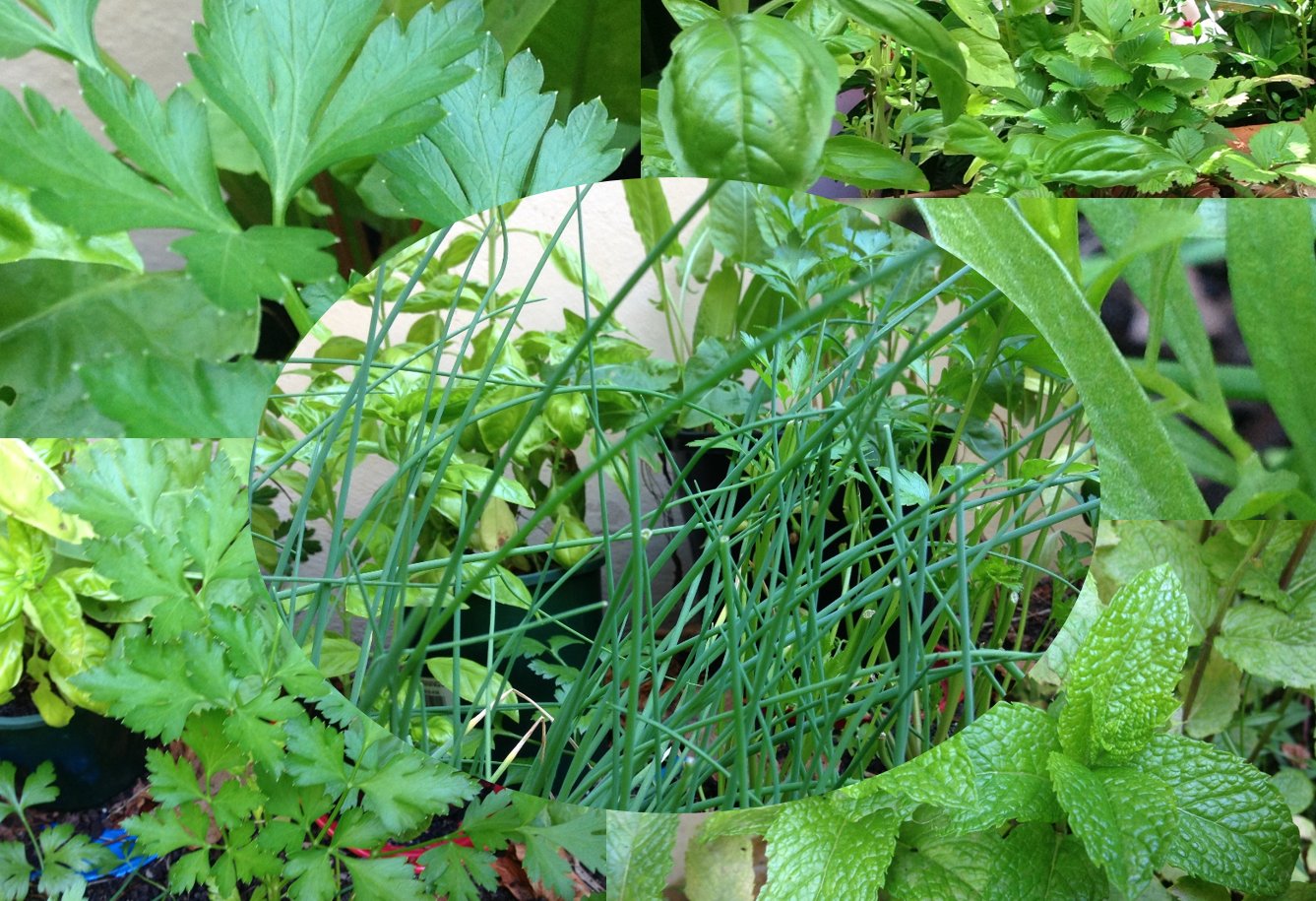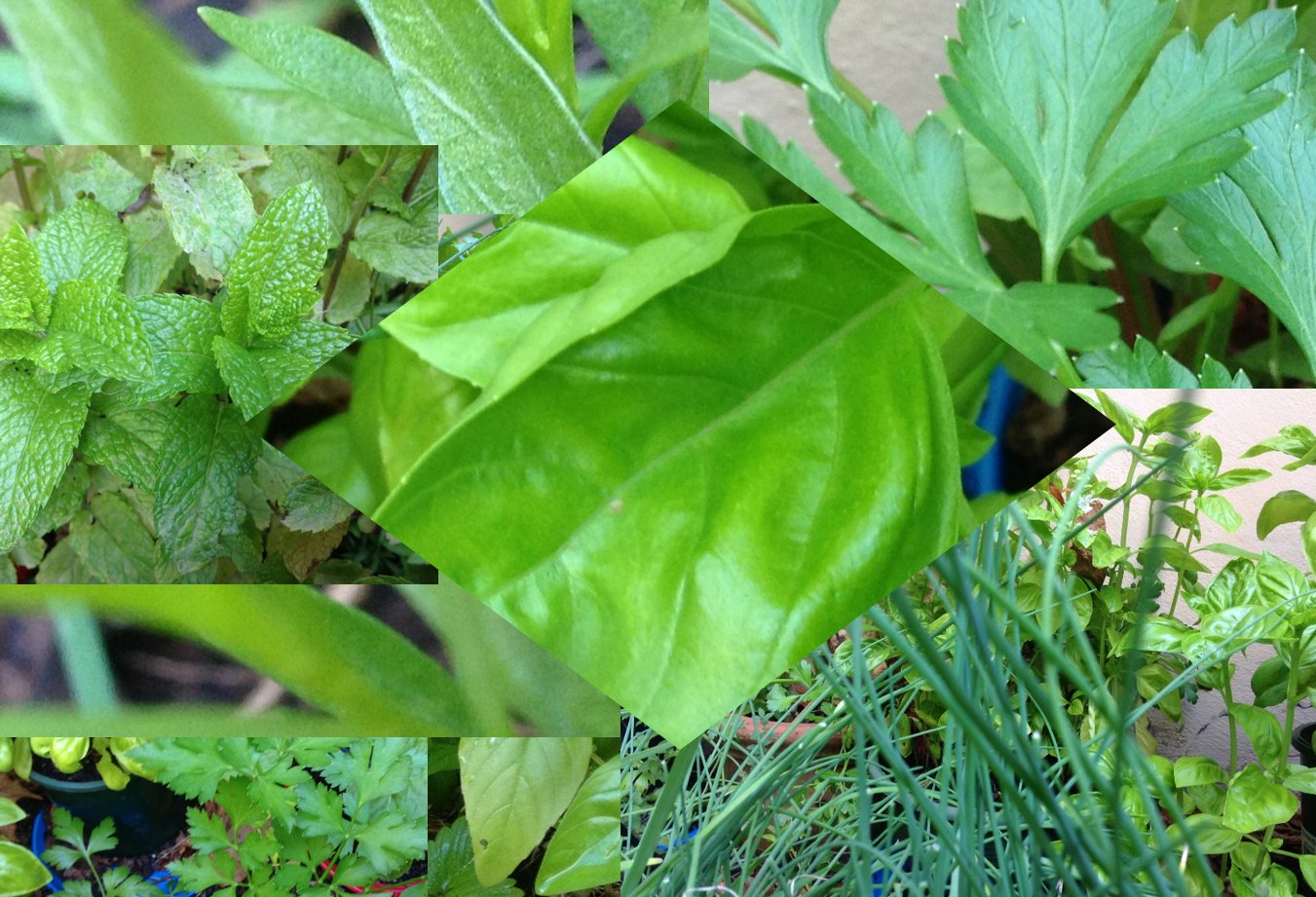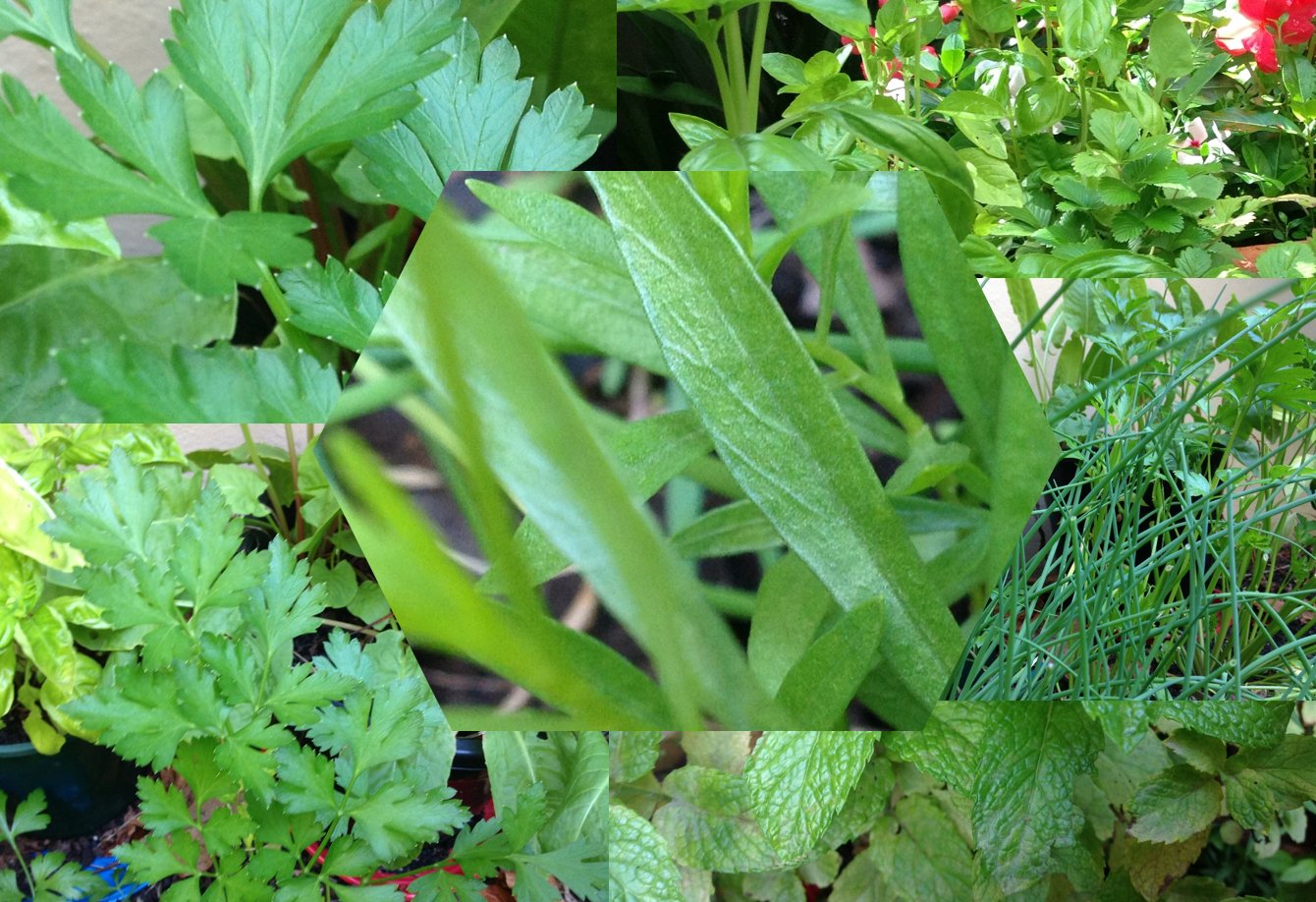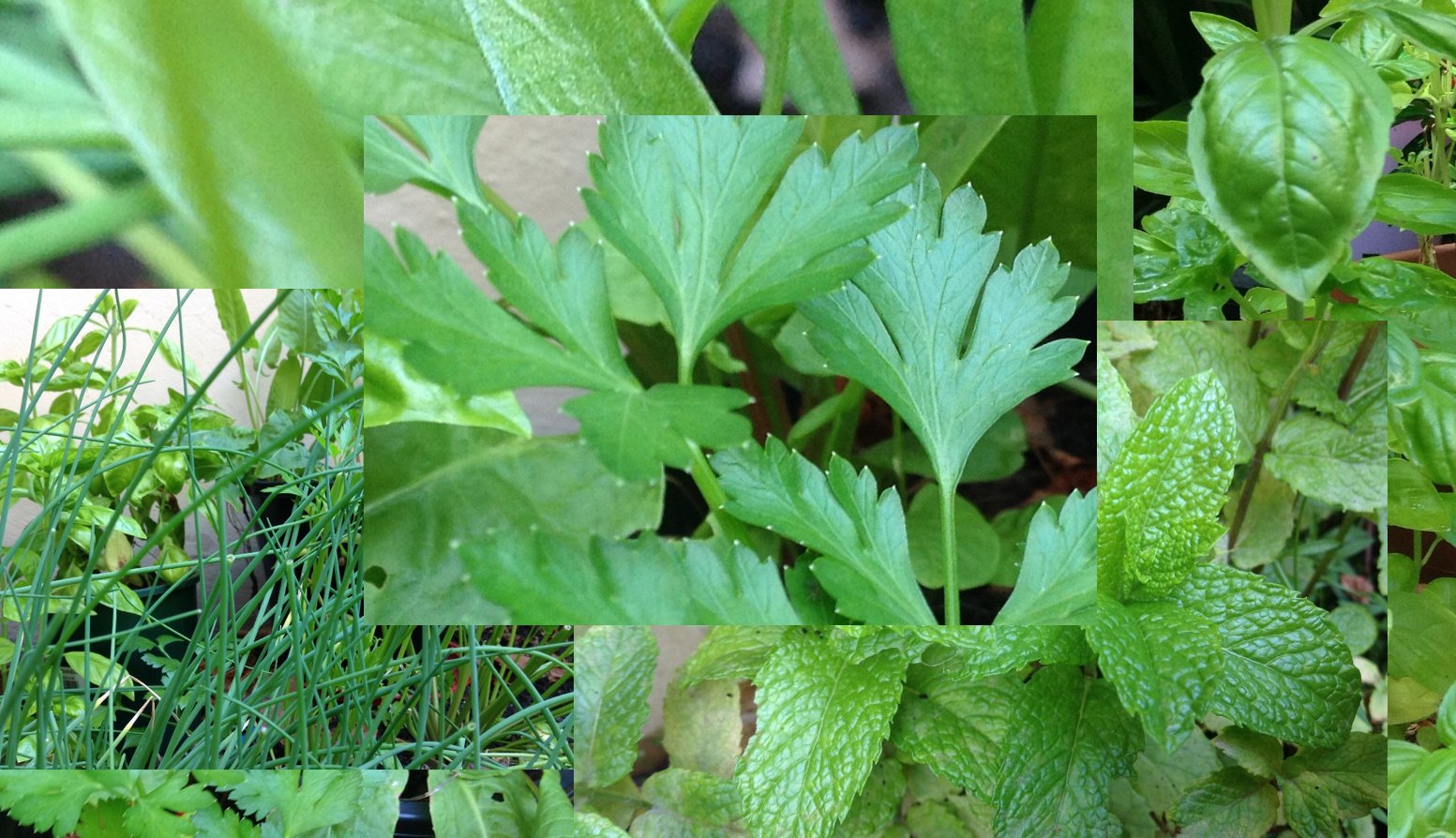(Continued from Our Herb Garden)
In this post I am writing about herbs that could be classified as ‘soft herbs’, meaning leafy, salad-like herbs as distinct from the more pungent ‘hard leaf’ herbs like thyme, rosemary and bay leaves.
Just now, in the second half of February, we have plenty of these in the garden. We have too much to use up in salads or in cooking. Thus we will make three types of ‘green sauce’ and freeze them in small amounts.
The soft herbs
Under ‘soft herbs’ I would include:
Parsley (flat leaf) Chives Garlic chives Mint Basil Tarragon (French) Rocket Chervil Coriander Dill Curly leaf parsley Watercress
Three green sauces
These sauces are worth having in your repertoire, if they aren’t there already:
- Pesto sauce: Originating from Liguria, Italy. Uses just basil and sometimes parsley. A sauce that is delicious with pasta, on bruschetta, in soups and in numerous other instances.
- Salsa verde: With Italian, Spanish, French, Mexican and other variations. Using several different herbs among other ingredients. A wide range of uses including those for pesto.
- Chimichurri: Originating from Argentina. Using parsley with oregano, though sometimes adding one or two other herbs. Served with grilled meat, poultry, fish and vegetables.
(There are other ‘green sauces’. A good example is mint sauce, my mother making the best I have ever had and which we will cover in another blog post. The salsa verde covered in this post only includes herbs, but there are ‘salsa verde’ recipes that include other green ingredients like capers and cornichons; some add anchovies.)
Links to the three recipes are included below. All three sauces are delicious and very versatile. They freeze well and can be brought out any time; they can provide that special something just when you need it. Each of the three sauces can be made as the need arises, assuming you have the ingredients to hand. However, if you have an excess of herbs consider the freezer option.
Before making the sauces, make sure the greens are well-washed and very dry (for example, by spinning then patting using kitchen paper or a tea towel) otherwise the sauce will be watery.
It is likely that your garden herbs will give a far more flavoursome result but store-bought herbs can still make acceptable sauces that will be delicious enough. For salsa verde, if you don’t have enough home grown herbs on hand, top up from the shops. The basic recipes can be – and are – varied in myriad ways, not all of them for the better.
Importantly, your home-made green sauces should be far superior to any sauce you might buy.
Make by hand or use a machine
The sauces can be made in small amounts or in large batches and then frozen. It is easy enough to make quite small batches using a mortar and pestle or by simply chopping the herbs finely like you would mince parsley or by using a blending stick in a small container. The name ‘pesto’ is said to derive from ‘pestle’, the implement performing the grinding of the ingredients in a ‘mortar’.
The mortar and pestle or hand-minced versions should give a superior texture and more distinctive flavour and you will feel a lot more satisfied because of the physical effort you have put in. (Add most of the ingredients at the beginning, except add the oil in stages as the crushing takes place, and add parmesan only at the very end when making pesto.)
For a large batch, it makes sense to use a food processor or blending stick in a large receptacle. The results will still be fine, especially if from home-grown herbs.
If we are making large batches to freeze we sometimes leave out the parmesan and nuts from the pesto as we can add them later when we go to use them; and we will leave out unnecessary ingredients from the other sauces. That gives you flexibility in later months: you might need a pesto like sauce without cheese or a non-spicy salsa verde without chilli or a chimichurri without coriander.
When we are making large batches, using up our excess soft herbs, it is not uncommon for us to make pesto first without the parmesan and nuts, followed by a batch of salsa verde and/or then followed by chimichurri. That is, we make them in sequence using the same food processor or container as it means the residual basil flavours from the pesto can be transferred to the salsa verde and then the residual herb flavours to the chimichurri. Then there is no need to wash the food processor or container until the very end.
Have plenty of containers on hand for freezing – we use very small (100 ml) or small (250 ml) plastic containers, available from supermarkets and other shops. The pesto and salsa verde are reasonably thick and can be frozen in either size container; chimichurri tends to be more liquid, needing the bigger container.
In summary:
- Get to know the ‘classic’ versions of the sauces before experimenting.
- Use home grown herbs if you can, or buy the most flavoursome ones you can find.
- For a small batch, use a mortar and pestle, or hand mince the ingredients.
- For large batches, use a food processor or blending stick and freeze in small quantities.
Pesto
Pesto is very familiar in Australia – it is a classic Italian sauce, from Liguria with its capital Genoa. The key ingredients for pesto are basil, garlic, pine nuts, olive oil and parmesan cheese. Basil is featured in the centre of the next photo.
For the nuts, pine nuts are the traditional option but walnuts are sometimes used. Note that pine nuts and walnuts mash up, helping make a creamier sauce, absorbing some of the other flavours. Other nuts, such as almonds or cashews, are brittle and only break up giving a crunchy rather than smooth result. Always ensure that the pine nuts or walnuts you use are fresh and not rancid or tainted. Unfortunately too many so-called ‘fresh’ nuts sold in Australia, even in supermarkets, are well past their prime. Find a good nut supplier so you can discover what true freshness tastes like, or taste them from the dispenser if you can. Check for sweet flavours and reject nuts that are metallic, pungent, sour or bitter.
However, having said all the above, there are numerous variations that you can consider for experimental purposes, using what is on hand at the time or creating a special ‘pesto’ for a particular purpose. Thus, these days, cooks and writers use the term ‘pesto’ rather loosely, for example, you may find a recipe for a pesto of coriander and peanuts! In fact, the first ‘pesto’ we ever had was made from equal quantities of parsley and basil and was most acceptable. It seems, in Liguria, often some parsley is added to retain a green colour, particularly if made in a food processor. Instead of basil (or as well as), consider using rocket (arugula) leaves, water cress, tarragon, chervil or chives. We have already posted a recipe for Kaffir lime pesto and at some stage we want to make lemon myrtle pesto.
For a standard recipe for pesto, click here: Pesto
Salsa verde
The salsa verde sauces we make are like pesto but without nuts or cheese. Basically it means pureeing one or more herbs with some garlic and olive oil.
One of my absolute favourite herbs, featured in the centre of the next photo, is French tarragon. It has an aniseed flavour – if you are going to buy a plant from the nursery or a bunch from the shops, chew on a leaf first to check for the flavour; so-called Russian tarragon with its lack of flavour is often passed off as the French option.
When buying tarragon try to find examples with soft leaves, rather than dark, tough ones. If you plant some it will die down and hibernate over winter but will come to life as the weather warms – assuming you or your gardener haven’t pulled out what they thought were dead twigs!
Tarragon is very versatile and a great substitute for many other herbs. When we have plenty in summer, we freeze leaves in zip lock bags.
For the recipe, click here: Salsa verde
Chimichurri
If you go to Argentina you are likely to try their steak, possibly in one of their parrilla restaurants – generally huge establishments with impressive grilling setups for barbecuing meat. And there are other wonderful establishments serving all manner of grilled and barbecued foods.
Served with the meat will be a sauce called chimichurri. It is quite different to pesto or salsa verde in that the key soft herb is parsley, combined with oregano leaves. Further, the sauce includes vinegar and water, elements used in making our Aussie mint sauce.
Chimichurri is very easy to make. You can make a thick version or a thin one. It is delicious with any kind of grilled or barbecued food: red meat, poultry, fish, prawns, vegetables. Spoon or pour it over. If you have plenty, use it for basting while cooking. You can make a warm version by adding the hot water at the very last minute, then pouring the sauce over the dish or serving in a jug. If you have salsa verde on hand (for example, in the freezer), you can make a quick chimichurri like sauce by adding more oil, some vinegar and hot water.
Parsley features in the centre of the next photo.
For the recipe, click here: Chimichurri







